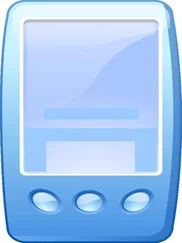A Contextual Web of Information
As the reader can appreciate, a number of key words help elucidate the new informational paradigm, words like context, system, web, and pattern . All these words infer interconnectivity, that all forms of information impinge upon one another such that no one thing can be fully understood in isolation.
Consider the following phenomenon that precisely highlights the contextual web of information uniting all and sundry within Nature, namely the formation of a snowflake in the atmosphere. An individual snowflake’s particular development and form is dependent on a contextual web of informing relations (temperature, air pressure, and so forth) that ultimately extend out into the entire Universe. Because each snowflake bears a unique set of contextual relations to the rest of the world, each snowflake develops a unique form. This is amazing but true.
Similarly, every structure, object, or “thing” is an informational entity that achieves its meaning and significance according to its language-like role within the context of the rest of the Universe—language-like because, as with words, objects play a well-defined role within a language-like system.
Consciousness as a particular form of information can now be discerned with striking clarity. Any particular conscious state, as it flows, is determined by all the informing relations converging in the neuronal system at that moment. These relations will be the unconscious systems of the mind along with the environment that surrounds the individual. This contextual network of informing relations determines what the neuronal activity means. The brain/mind system exists in relation to the immediate surroundings, society, culture, the planet, and the rest of the Universe, and it is this network of relations converging in the brain that determines the state of consciousness. Furthermore, to consume psilocybin mushrooms is to allow a new set of informational relations to converge within the neuronal brain . Thus, one may suddenly “mean” more in relation to the rest of the reality process. Regarding consciousness, this is perhaps the most that can be gleaned from our informational model at this point.
So far, I have deliberately avoided putting the term process before the term information . Instead, I have repeatedly spoken of a flow of information in process. Everything—the entire substance of Nature—consists of information, and everywhere this information is in process—flowing, merging, coalescing, and informing in a language-like way. If we switch the terms information and process around, we unavoidably face yet another extraordinary idea, that in some sense the Universe must be a kind of computation, for computation involves the processing of information. That the Universe is akin to a vast computation (or even a simulation) is a notion currently voiced by a number of prominent scientists, and it is worth exploring in more detail as it might bolster the idea that reality is a system of self-organizing language-like information. Just when you thought it was safe to take a well-earned breather, we encounter yet more profundity.

EIGHT
Does the Universe Compute?
Before we try on the Universe-as-a-computation notion for size, let us briefly acquaint ourselves with the number-crunching background that provided us with computer systems in the first place. We are not so much interested in the details of computer hardware but rather the essential informational principles governing the operation of computers. This will reveal more about information and the way different forms of information can be processed. We will then be able to see if a computational description really is suitable for Nature (this is not as offensive as it might at first seem to some). If Nature can indeed be understood in computational terms—and I hasten to add that I am not the first to put forward this idea—we would have to view ourselves as living programs written in an organic, biochemical language. More to the point, we would represent programs whose destiny is to be twice executed— first by way of genetically determined growth and second by inexorable death.
In the meantime, of course, before the latter eventuality, we can, through the consumption of certain “access codes,” come to experience information pertaining to the point or purpose of the overall master plan governing the reality process. Once more, it sounds assuredly fantastic, yet if the computational paradigm is in any way accurate in describing what Nature is about, then such radical ideas as these will have to be accepted or at least be debated. Anyhow, to get you in the mood to swallow the idea of an information-processing Universe, let us briefly look at the rise of computer culture, for, whatever your opinion of computers, these “infomous” machines are guaranteed to run and run….
It was the emergence of information-processing computers in the 1940s that heralded the arrival of the Information Age. Before 1950 there were just fifteen digital computers in the world, probably because there was no room for any more, given their huge bulk in those days. Now, of course, computers have shrunk in size and are pretty much a compulsory possession. Indeed, our culture thrives on computers, which explains the exponential growth in computer technology, that is, that computer science is evolving ever more rapidly. Trade and industry, the military, our education systems, financial institutions—all now depend on the constant processing and manipulation of information carried out by versatile computers. Information is the supreme currency of modern culture; it is everywhere being fed in and out of computer systems.
As with information and information integration in general, the emergence of computer systems and the proliferation of global computerized telecommunication systems like the Internet seem unstoppable. It is difficult to discern whether anyone has any real control over this development. So fast is computer technology racing that before we can assess the implications of one aspect of it, another dramatic breakthrough is made. Nostalgically recall the chunky portable digital calculators that suddenly appeared in the mid-1970s. At the time, these computing devices seemed excitingly futuristic. Whether or not they were understood, their various buttons and computational functions seemed to provide an instant gateway to esoteric mathematical knowledge. Input a few numbers and commands, and the little machine instantly responded as if by magic. Log books and slide rules could at last be ceremoniously trashed. And yet smaller mass-produced digital calculators are now given away in cereal packets. Similarly, those original home computers of the early 1980s, like the cute rubber-key Sinclair ZX Spectrum (with a whopping 48K memory!), are now all but worthless and primitive (in terms of capacity) in comparison with today’s lightweight, high-resolution, portable touchscreen variety. And by tomorrow even these will have become passé. The digital computer revolution is happening so fast that it’s a blur.
Computers are popular because they are able to process information quickly and in so many different ways. Processing information, information in process—it’s the same thing. At heart, information processing is all that computers do, whether the computer in question is used by the Pentagon, the Inland Revenue, or me to write this book. Computers might process musical forms of information, financial forms, meteorological forms, or even viral forms. Whatever the form, computers can be fed only with information, which they promptly process and return to the user.
Читать дальше











